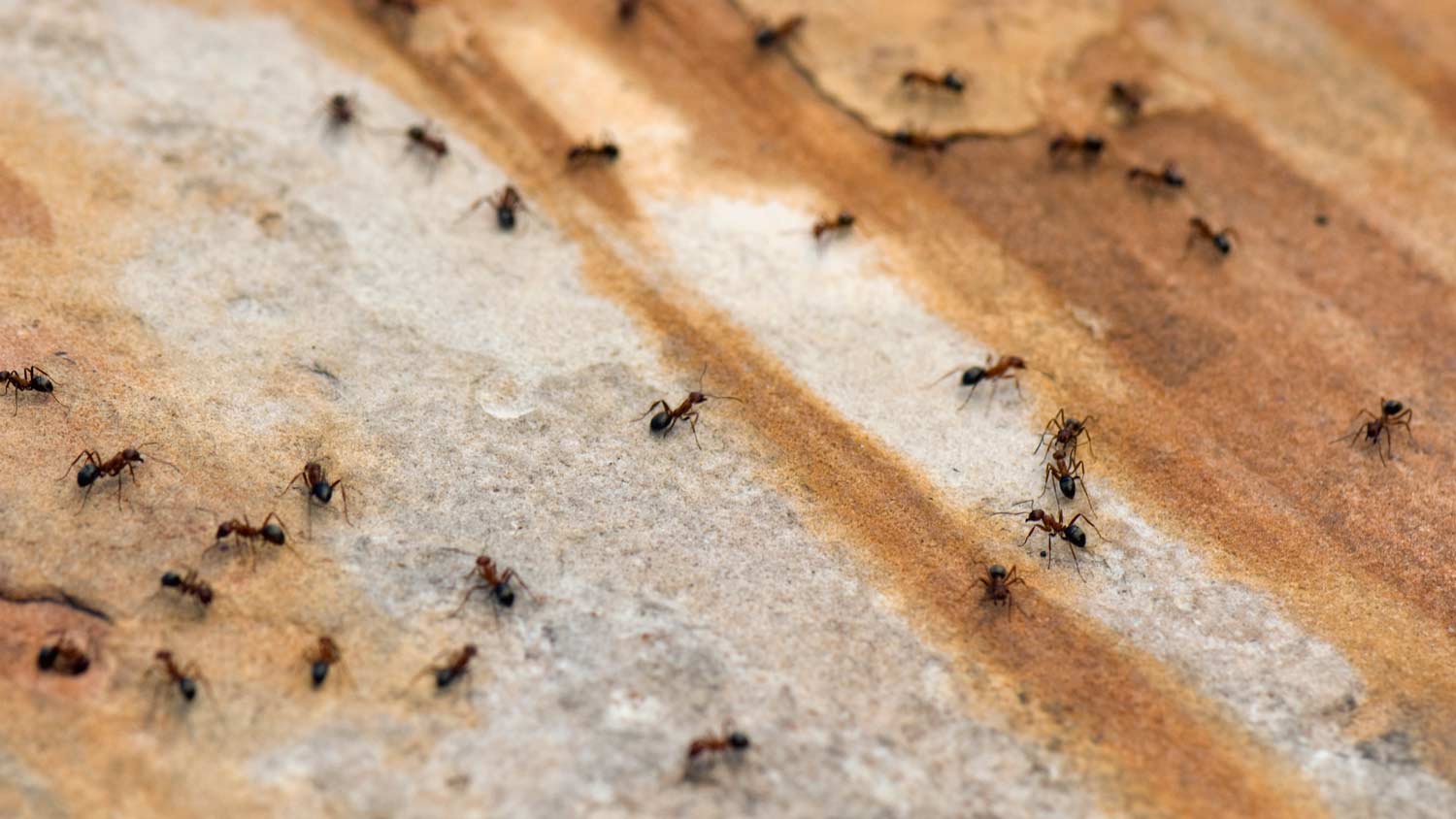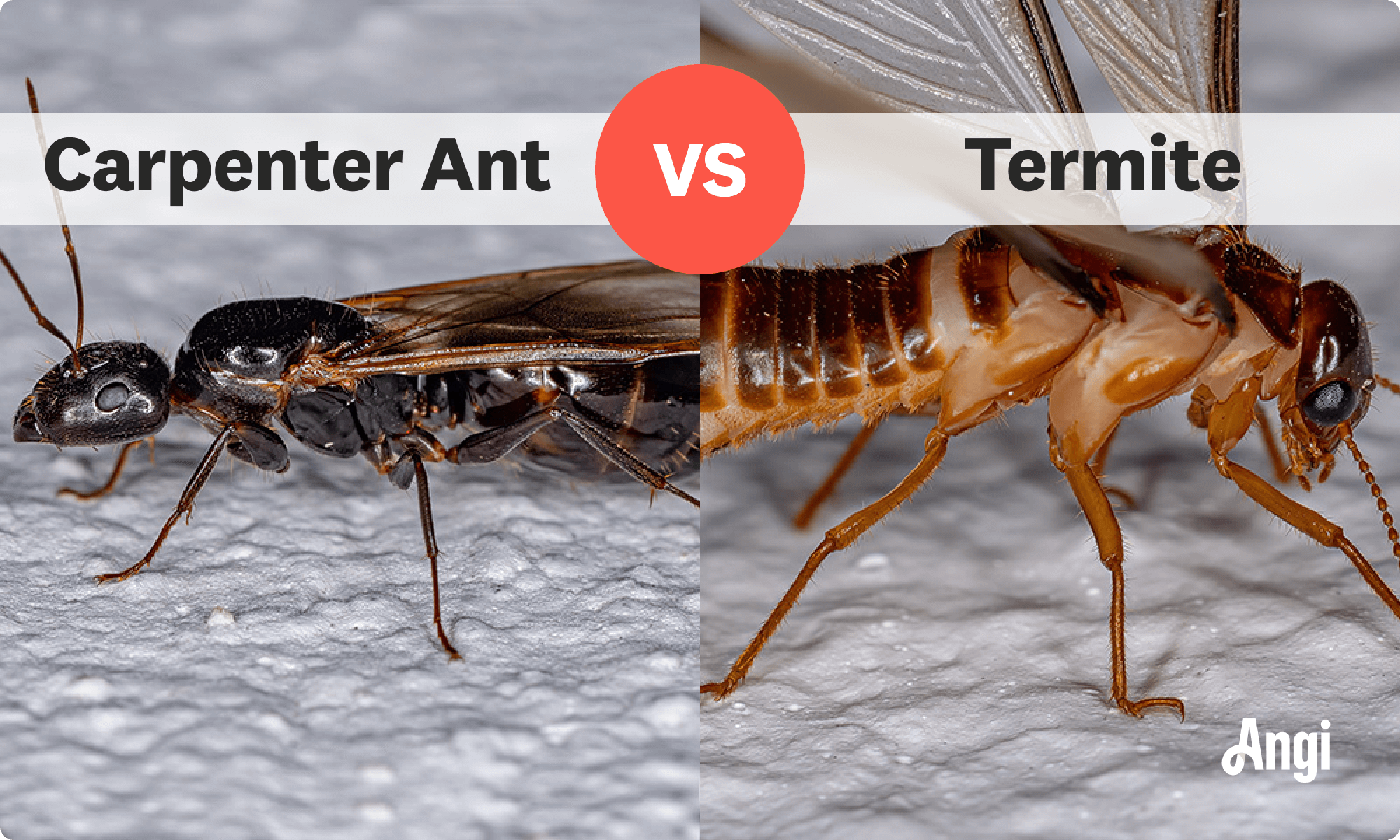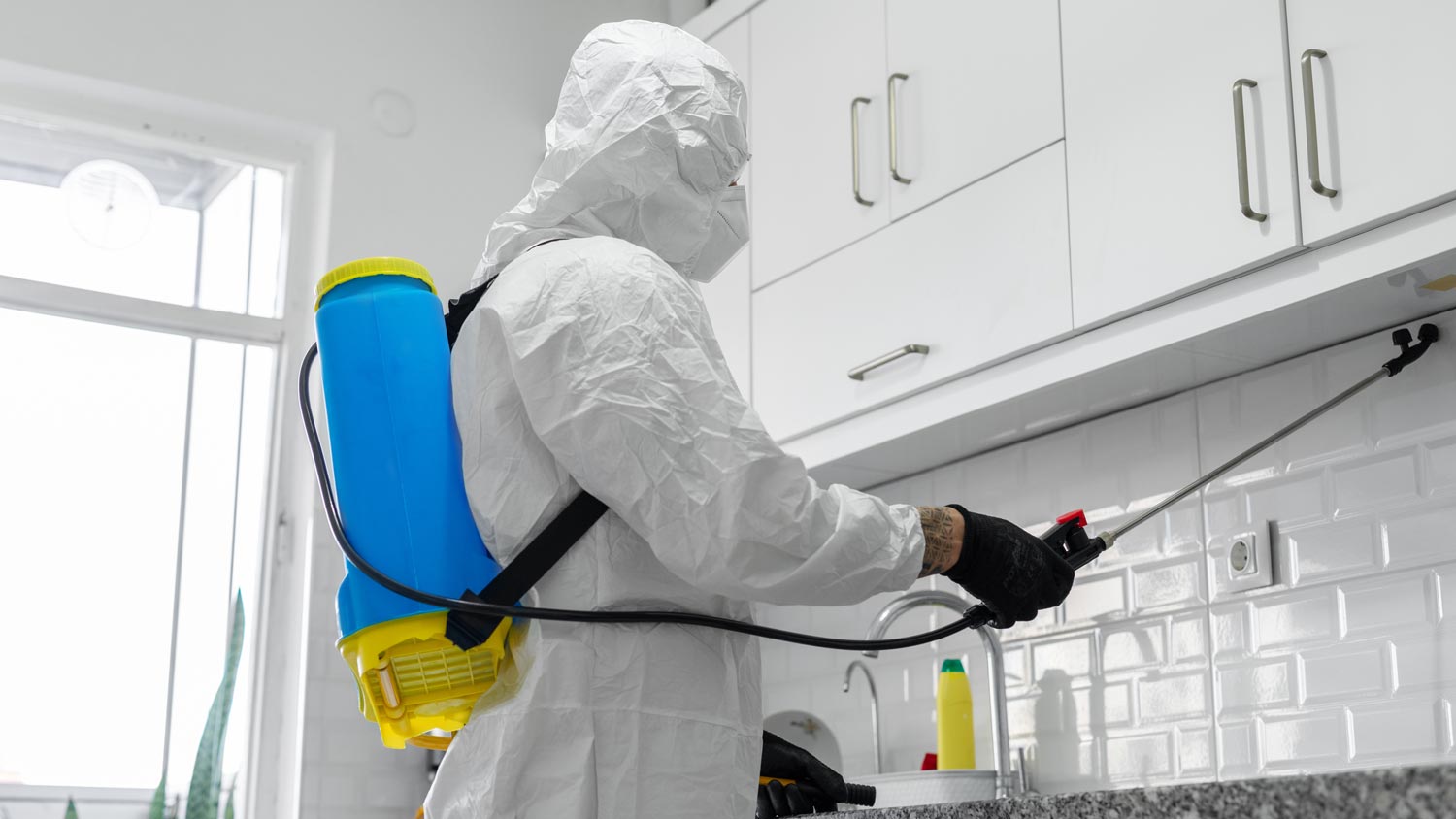
Whether you have bugs, bats, or rodents invading your home, you’ll want to contact an exterminator quickly. Find out how much pest control costs in Columbus, OH.
Visible ants, droppings, or discarded wings are a few telltale signs of an infestation


Signs of a carpenter ant infestation may include ant trails, droppings, nests, or discarded wings.
Unexpected piles of wood shavings or dust can also signal a carpenter ant infestation.
Sometimes, an infestation can result in strange sounds in your walls or weakened framing.
In many cases, you’ll need professional treatment to get rid of carpenter ants.
The cost to hire an ant control pro is $250 to $500.
Piles of ants outside the home shouldn’t be cause for concern. But if you spot a trail of large ants inside or hear scratching noises in your walls, those are signs of carpenter ants in your house, which is a larger issue. Knowing other common signs and what steps to take once you’ve identified them can help you figure out who to call next and what prevention methods to put in place.
Recognizing early warning signs is important, but figuring out the right fix isn't always simple. Delaying professional help or attempting complex DIY repairs can lead to further damage and increased costs. With our network of local pros, you can hire a skilled professional to assess the issue and recommend the best solution.
Stay alert for the following signs of a carpenter ant invasion in your home.

The most obvious sign of carpenter ants in your home is physically spotting them. The most prominent feature that sets carpenter ants apart from regular ants is their segmented body, which consists of three main parts: the head, thorax, and abdomen. They are also on the larger side, about 6 to 13 millimeters long.
Since many signs of a carpenter ant infestation are similar to a termite infestation, getting visual confirmation is important. Termites are often smaller than carpenter ants and have a broad body with no defined waist, which ants do. They can be black, brown, whitish, and other similar shades, while carpenter ants are either black or dark red.
Keep in mind that a carpenter ant or two doesn’t mean that your home has an infestation. Carpenter ants are known to forage for very long distances in search of food, so seeing one doesn’t mean that a nest is nearby. However, it does mean that the ants have found a way to access your home, and could make it more likely that carpenter ants will target your house for a satellite nest.
As an infestation develops and a nest is established, you might spot flying ants on your window panes. If you don’t treat the situation, you could eventually end up with ants coming out of your ceiling, walls, or other hidden areas.
It’s rare to find a single ant without a trail following close behind since they tend to travel together for long distances to forage for food. A few ants inside and trails of them outside is a good indicator that it’s time to hire an exterminator. These pest control pros can put together and implement a treatment plan before the infestation gets out of hand.
“Swarmer” carpenter ants—or winged, reproductive carpenter ants—are likely to leave behind discarded wings near window sills, baseboards, or vents, since those areas tend to be helpful entry points. Whether you notice a few wings or a whole pile, both are signs that you have a carpenter ant problem.
Finding droppings in your home is a sign that carpenter ants are there to stay. Droppings from carpenter ants are part of their frass, or the general bits of matter that infesting insects leave behind. In this case, ant frass is usually a mixture of wood dust and droppings. At first glance, it will look like a small pile of wood shavings left against a wall or corner.
Note the difference between carpenter ant frass and termite frass. Carpenter ant frass tends to be less uniform in shape and a lighter color than the dropping termites leave behind.
Wings aren’t the only sign of a carpenter ant problem. In late spring and early summer, ants from a nest emerge to mate. They’ll often fly around windows (both inside and outside of your home), but they can also appear near baseboards, vents, and other openings around your house. Try to capture one of the swarmers if possible: It can be very difficult to tell if they are carpenter ants or termites without a closer look.
Carpenter ant frass can look a lot like wood shavings. If you find anything that looks like an unexpected pile of wood dust in your home, it’s time for a closer inspection.
Like termites, carpenter ants prefer soft wood that’s wet or decayed, so they often come with moisture problems in a home. While rotten wood can fall apart on its own, it won’t create the small piles of frass that are such a classic sign of a bug problem.
That faint rustling you might hear inside your woodwork isn’t from stray leaves or rodents—it could be carpenter ants. Because they tend to burrow into woodwork, they can make a scraping or rustling sound when they’re scraping out wood particles. If you hear noise frequently (especially at night, when carpenter ants are most active), it might be time to call your local ant exterminator.
Carpenter ants are attracted to soft, moist, or decaying wood, which often lacks structural integrity. As the ants tunnel deeper into the already-damaged wood, it can weaken even further.
If carpenter ants are living in your window, door, or house framing, they can cause substantial damage and compromise the framing’s integrity. In severe infestations, this can lead to stuck windows and doors, sloping or sunken floors, sagging ceilings, and bulging walls.
Carpenter ants don’t actually eat wood, but they eat all kinds of protein and sugar. Inside your home, they’re attracted to sweet, sticky surfaces and accessible protein like pet food.
Like the name indicates, carpenter ants primarily live and work in wood, and especially love dying stumps or logs to build their homes. However, they’re also attracted to sheds, wood piles, damp decks, and indoor wood vulnerable to chewing.
Carpenter ants have an additional surprise, though. They have one “parent” nest with the queen that needs a constant source of water nearby. They create several “satellite” nests away from the parent nest to make it easier for them to forage for food. That often means that the ants can set up a parent nest outdoors and start creating a satellite nest inside a home.
To fully remove the carpenter ant problem and prevent repeat infestations, it may be necessary to find the parent nest—something pest control professionals can resolve.

If you've attempted to control the carpenter ant infestation on your own using store-bought baits or sprays, but the problem persists or worsens, it's time to seek professional help. DIY methods may not effectively target the root of the infestation or reach hidden nests. You should hire a pest control professional if you experience any of these issues:
Constant ant trails
Multiple nests near your property
Damaged wood
Extreme allergies or health risks
You can attempt to remedy your ant problem by setting ant bait and sealing entry points, but carpenter ants are harder to eliminate than other varieties. Since they like to chew through wood, carpenter ants can cause structural damage to your home. They are better treated by a professional with the right pesticides and equipment to get the job done. Plus, they’ll know how to get rid of ants in either one session or multiple treatment sessions in order to eliminate them for good.

The cost to hire an ant exterminator ranges from $80 to $500, depending on the extent of the infestation and the location of the ants. If you opt for the DIY route for smaller, more contained infestations, ant traps or insecticides will likely run you about $5 to $10 per trap or treatment.
Because carpenter ants tend to be more difficult to remove, an exterminator may be the best route to go. You may pay more upfront, but the issue will be resolved sooner and you won’t risk damage to your home waiting for your own remedies to take effect.
Exclusion is the best practice for keeping unwanted pests out. Examples include replacing weather stripping around windows and doors, using dehumidifiers to keep moisture content down, sealing up cracks and crevices both on the exterior and interior of the house, repairing any household damage, and taking care of water-related leaks sooner than later.
The best way to prevent carpenter ant infestation is to keep both the inside and outside of your home well maintained.
Carpenter ants are always on the hunt for sweet, protein-rich food, so make sure to clean out your pantry and kitchen as often as possible.
Sealing any prevalent cracks or crevices can also keep the ants at bay so they don’t have an easy entry point into your home.
Remove any rotten debris, firewood stacks, or tree trunks near your property.
From average costs to expert advice, get all the answers you need to get your job done.

Whether you have bugs, bats, or rodents invading your home, you’ll want to contact an exterminator quickly. Find out how much pest control costs in Columbus, OH.

Find out how much it costs to remove armadillos and stop them from coming back. Know how much to budget to humanely remove these pesky critters from your yard.

Discover mosquito control service cost estimates, including average prices, key cost factors, and tips to save on professional mosquito treatments for your home.

Bed bugs are tricky to eradicate, but certain substances can kill them on contact. Find out what kills bed bugs instantly and when to call in a pro.

Everyone deals with rodents at some point. Get to know the 5 signs you have mice and what to do next.

Learn how to keep badgers away in a safe and humane way. They’re cute, but you don’t want them taking up residence in your home and garden.